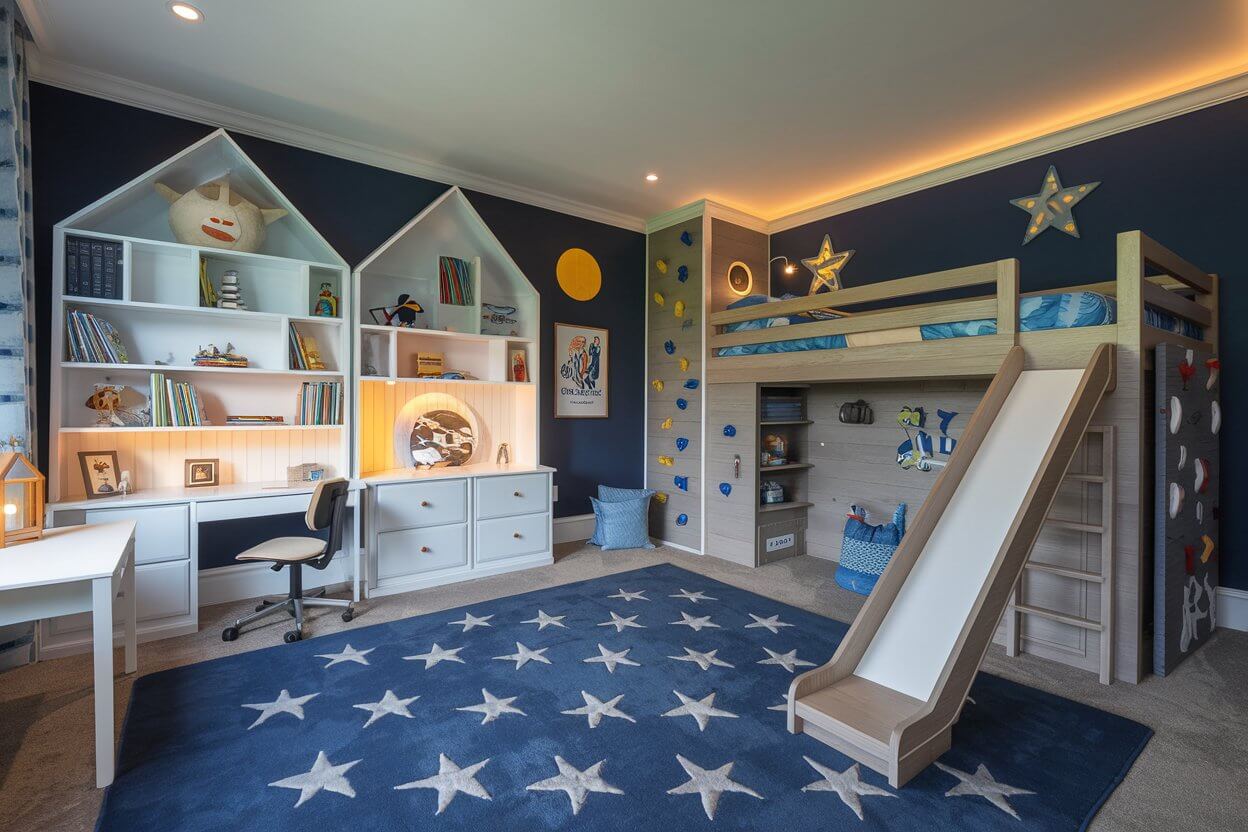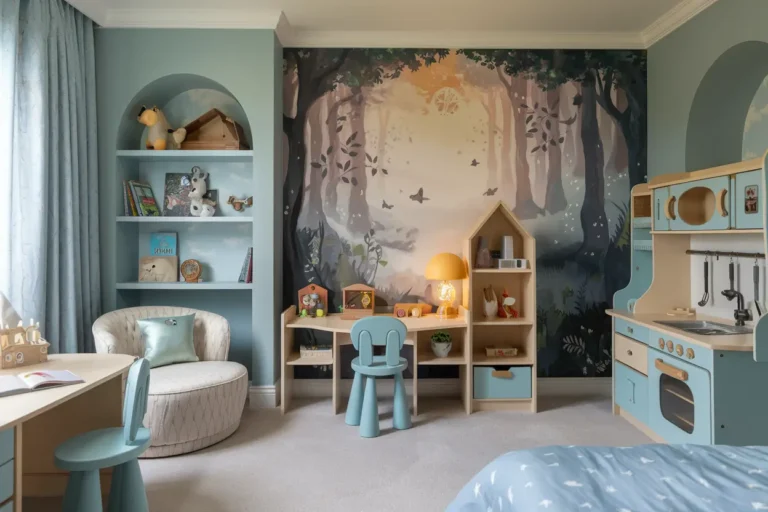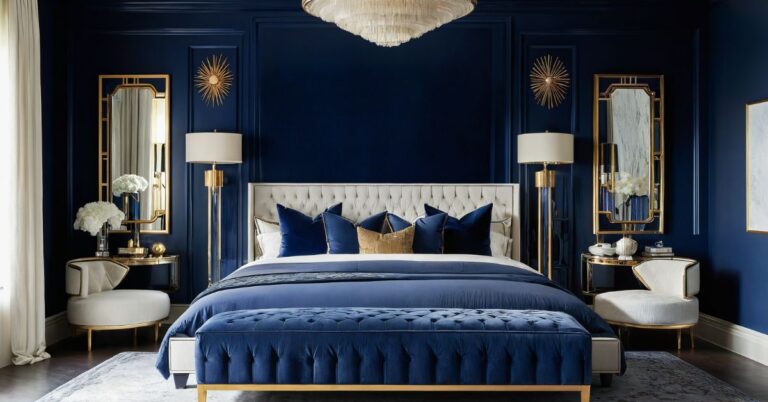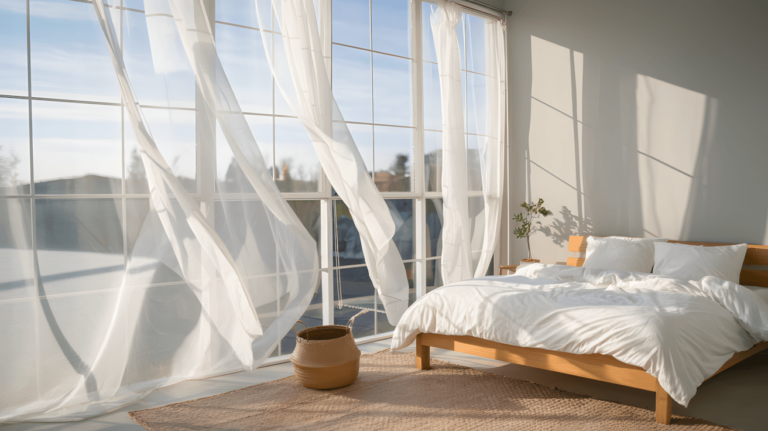It’s 8 PM, and instead of the usual bedtime battle, your son actually asks to go to his room. Sounds impossible?
After designing over 200 kids’ bedrooms in the past decade, I’ve discovered that the secret isn’t bribes or threats—it’s creating a space so captivating that bedtime becomes the highlight of their day.
The transformation happens when a bedroom stops being just a place to sleep and becomes their personal kingdom, adventure headquarters, or creative sanctuary.
Whether your little one dreams of exploring galaxies, scoring the winning goal, or building epic Lego cities, the right bedroom design can turn those dreams into reality while improving their sleep quality.
In this comprehensive guide, you’ll discover 22 proven bedroom ideas that have successfully converted even the most reluctant sleepers into bedtime enthusiasts.
From budget-friendly DIY solutions to show-stopping statement pieces, these concepts work because they tap into what truly excites boys: adventure, creativity, and having a space that’s uniquely theirs.
Adventure-Themed Bedrooms That Spark Imagination
1. The Ultimate Pirate Ship Bed
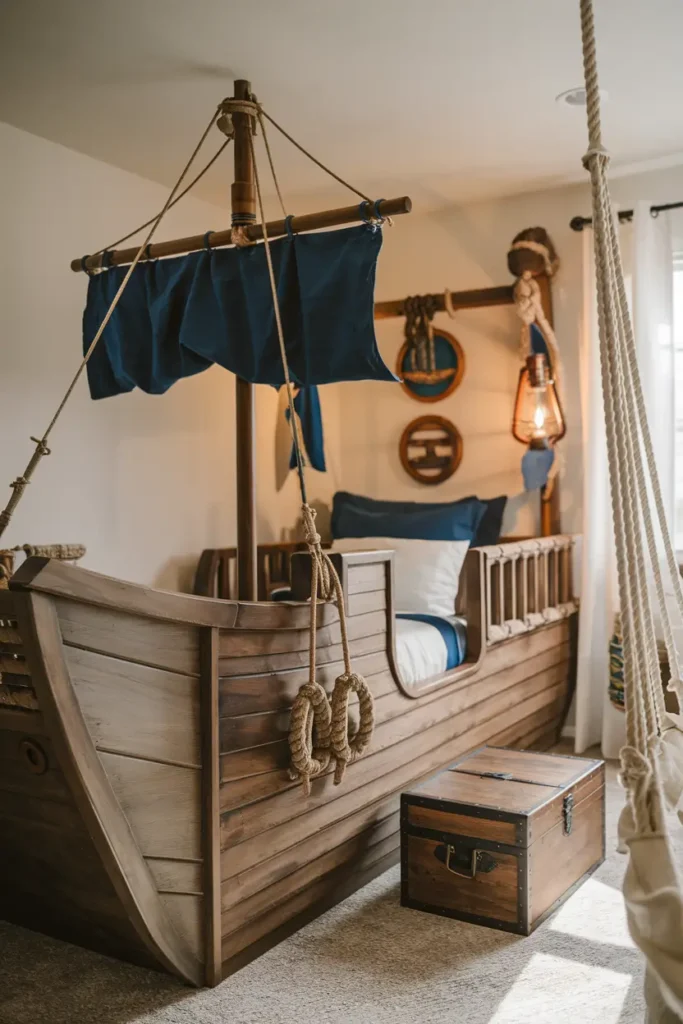
Transform an ordinary bed into a swashbuckling adventure with a custom ship-inspired frame.
I’ve seen parents create stunning pirate beds using basic lumber, rope details, and a fabric sail.
The key is positioning the bed like a ship’s cabin, complete with porthole windows (circular mirrors work perfectly) and treasure chest storage at the foot.
Why it works: Boys love the sense of adventure and the feeling that they’re the captain of their own vessel. The enclosed feeling of the “ship” actually promotes better sleep by creating a cozy, secure environment.
Best for: Ages 4-10, especially boys who love adventure stories and imaginative play.
Pro tip: Add battery-operated string lights around the “rigging” to create a magical nighttime ambiance that makes bedtime feel special rather than scary.
Potential drawback: Requires significant DIY skills or professional help for complex designs.
2. Space Station Command Center
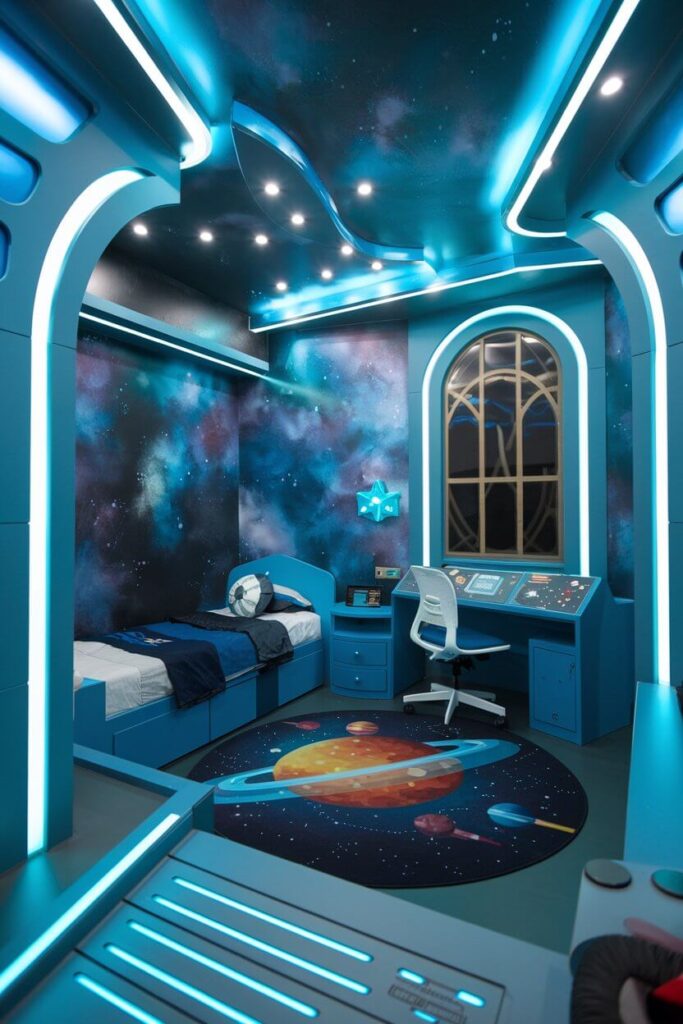
Create an out-of-this-world experience with metallic paint, LED strip lights, and control panel decorations. One client’s son now “reports for duty” every night in his NASA-inspired bedroom, complete with a ceiling painted like a starry sky using glow-in-the-dark stars.
Why it works: The space theme combines education with imagination, and the “mission to sleep” concept reframes bedtime as an exciting adventure rather than an end to fun.
Best for: Boys aged 6-12 who are fascinated by space, science, or technology.
Pro implementation tip: Install a dimmer switch and program it to slowly reduce lighting over 30 minutes, simulating a spacecraft’s nighttime protocol.
Potential drawback: Can be overstimulating if too many lights and gadgets are included—balance is key.
3. Jungle Expedition Base Camp
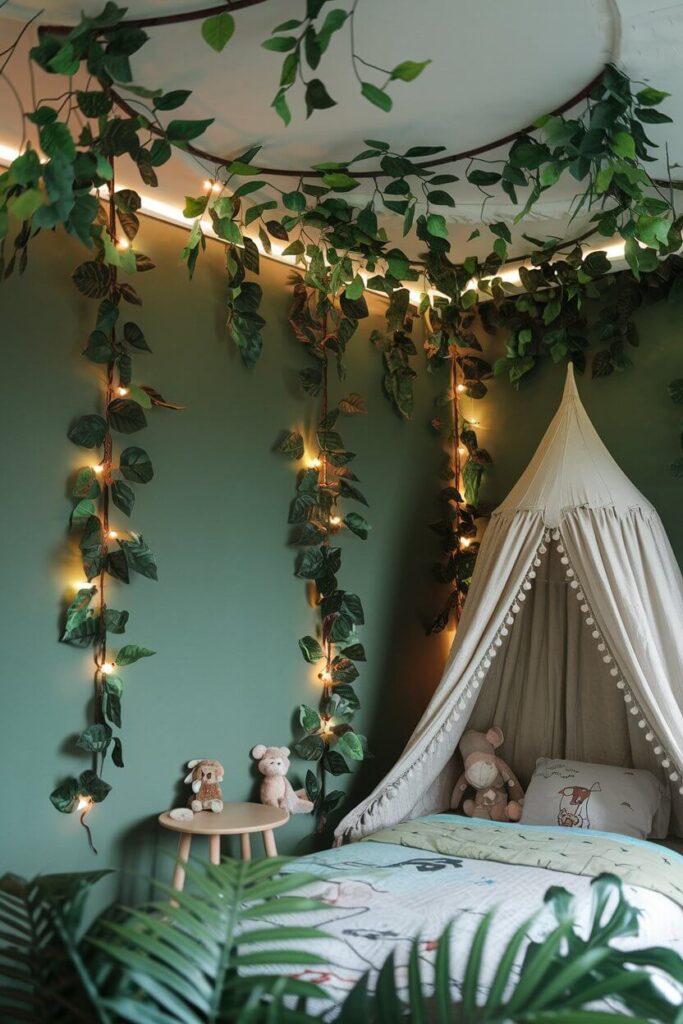
Using forest green paint, artificial vines, and tent-like draping over the bed, create a jungle hideaway that feels like a real expedition camp.
Add stuffed animals representing jungle creatures and use a mosquito net as a bed canopy for authentic camping vibes.
Why it works: Taps into boys’ natural love for exploration and the outdoors while creating a cozy, protected sleeping environment.
Best for: Nature-loving boys aged 5-11 who enjoy outdoor activities and animal documentaries.
Expert insight: Include nature sounds on a Bluetooth speaker with a sleep timer—the gentle sounds of rain or jungle ambiance can significantly improve sleep quality.
Common mistake: Using too many bright greens can feel overwhelming; incorporate earth tones and natural textures to keep it calming.
4. Medieval Castle Fortress
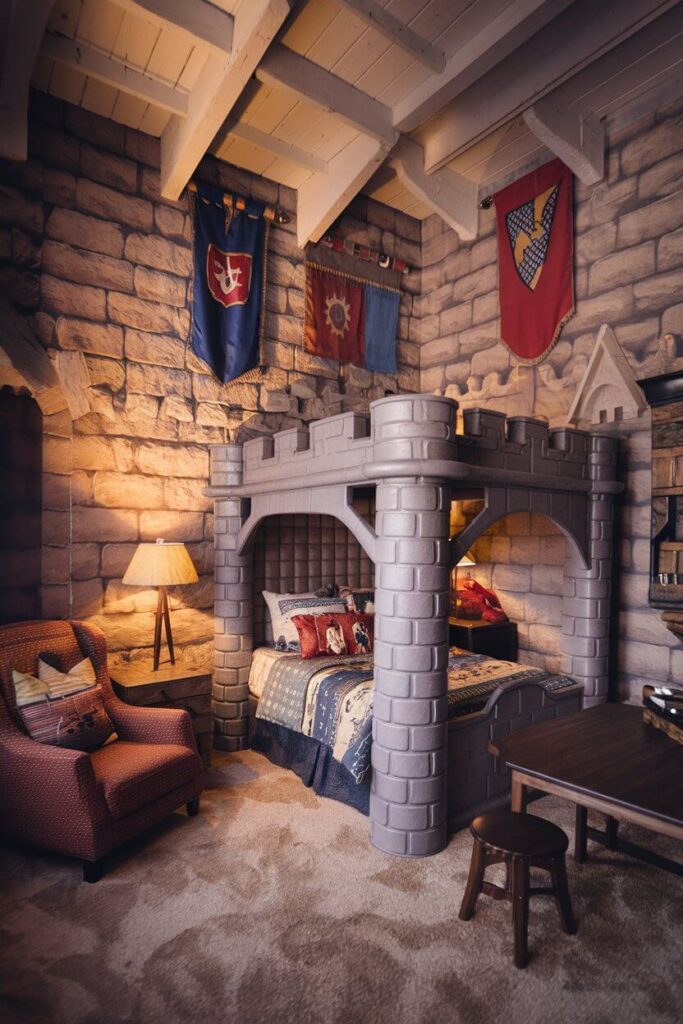
Build a castle-themed bedroom with stone-textured wallpaper, battle flags, and a bed designed to look like a castle turret. Wooden shields and foam swords mounted safely on walls complete the medieval atmosphere.
Why it works: Boys love feeling like brave knights protecting their kingdom, and the fortress concept makes them feel safe and secure in their own domain.
Best for: Boys aged 4-9 who love medieval stories, knights, or fantasy adventures.
Action step: Create a “knight’s code” poster that includes bedtime rules presented as noble duties—”A brave knight gets proper rest for tomorrow’s adventures.”
Sports and Action-Packed Designs
5. Stadium Luxury Box Bedroom
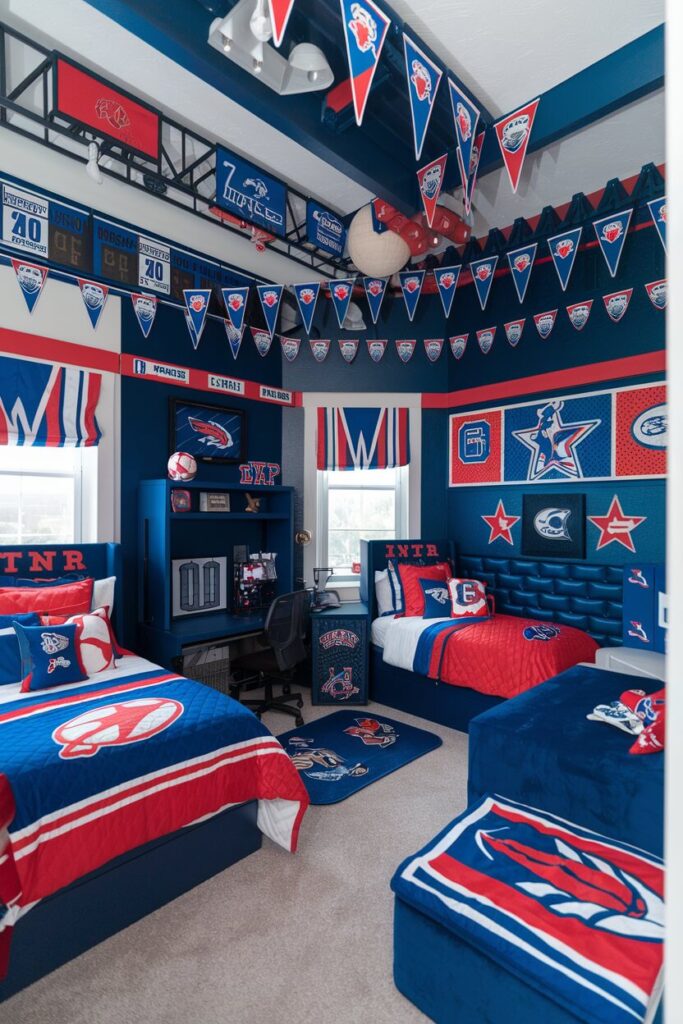
Design the room to feel like a VIP sports viewing experience with team colors, pennants, and a scoreboard showing bedtime as “game time.”
Include a small seating area with bean bags for “watching the game” (reading before bed).
Why it works: Reframes bedtime as the main event rather than something that interrupts the fun, especially effective for sports-obsessed kids.
Best for: Boys aged 7-14 who live and breathe sports.
Pro tip: Rotate the team theme seasonally to keep the excitement fresh—football in fall, basketball in winter, baseball in spring.
Potential drawback: Can become outdated quickly if focusing on specific players rather than teams or sports in general.
6. Skate Park-Inspired Room
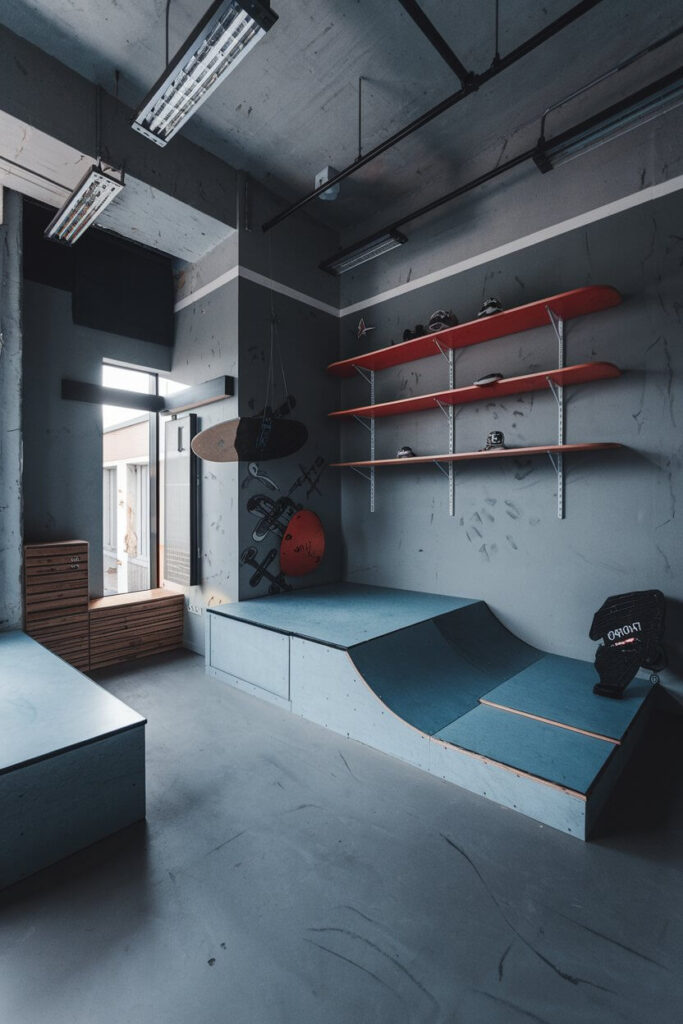
Use concrete-gray paint techniques, skateboard deck shelving, and ramp-inspired furniture angles to create an indoor skate park vibe. Mount actual skateboards as wall art and use grip tape as accent strips.
Why it works: Appeals to the rebellious, cool factor that many boys crave while channeling their energy into their personal space.
Best for: Boys aged 8-16 who are into skateboarding, BMX, or alternative sports culture.
Industry insight: Safety is crucial—ensure all skateboard displays are securely mounted and positioned where they won’t fall during sleep.
Advanced technique: Create a reading nook that looks like a skate bowl using curved plywood—perfect for quiet time before bed.
7. Race Car Driver’s Pit Stop
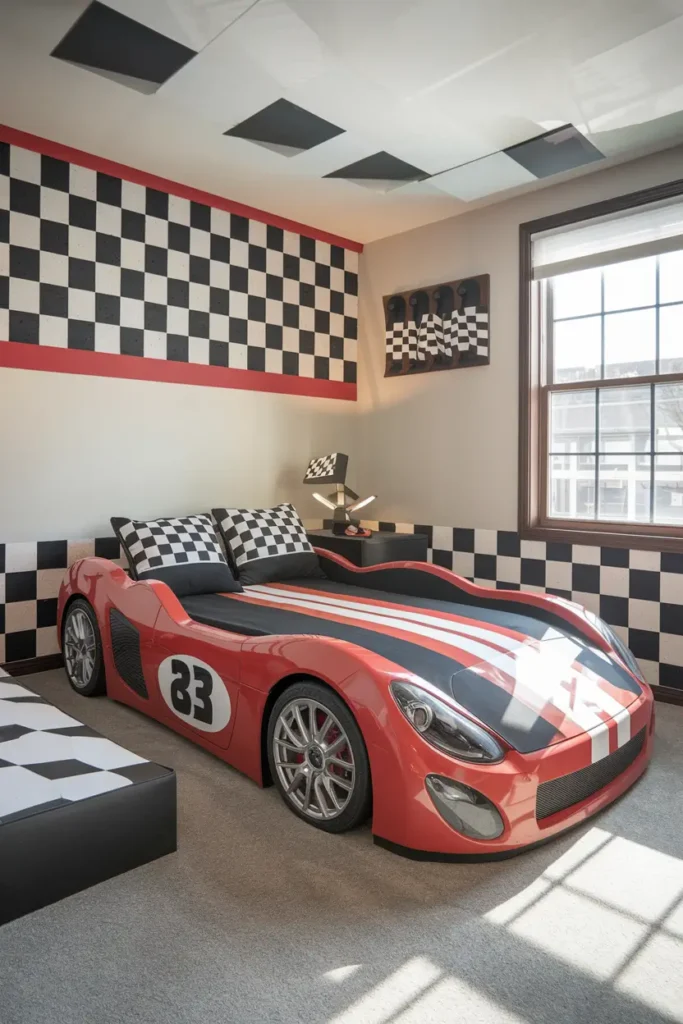
Transform the bedroom into a race car driver’s personal space with checkered flag patterns, racing stripes on walls, and a bed designed like a race car. Include a “pit crew” station (desk area) with racing memorabilia.
Why it works: Boys love speed and competition, and the pit stop concept makes the room feel like a professional athlete’s space.
Best for: Car-crazy boys aged 3-10 who dream of being race car drivers.
Common mistake: Overdoing the red and black color scheme can be too stimulating—add calm blues or grays to balance the energy.
Creative and Maker Spaces
8. Artist’s Loft Studio
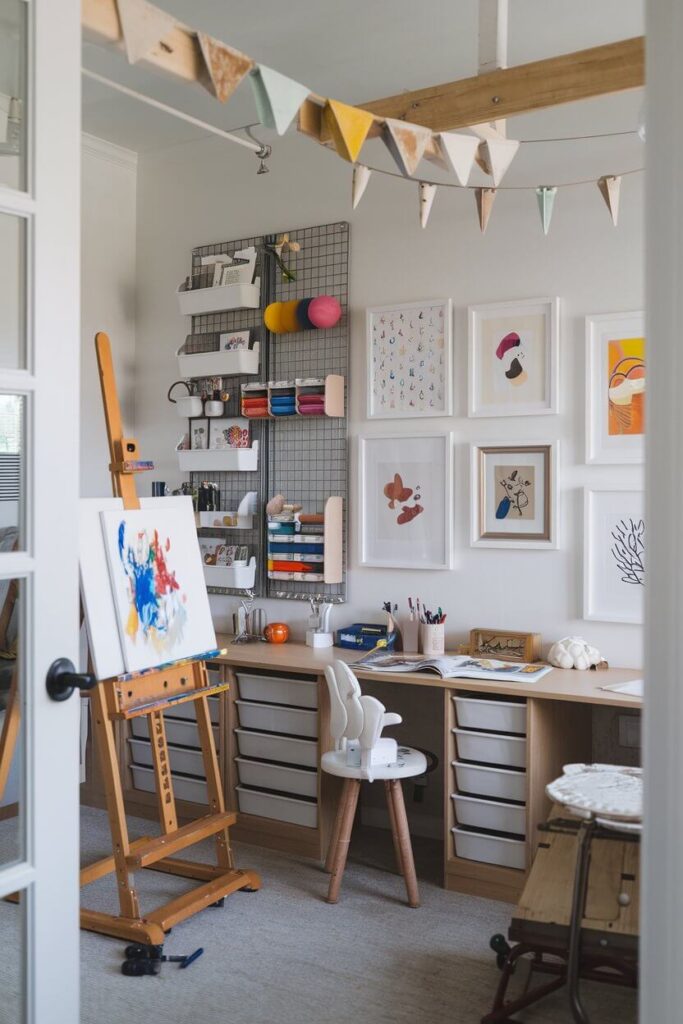
Create an inspiring creative space with an easel, art supply organization, and a gallery wall for displaying masterpieces.
Use industrial-style furniture and plenty of natural light to mimic a real artist’s studio.
Why it works: Gives creative boys a space to express themselves and makes bedtime feel like they’re retiring to their professional studio.
Best for: Artistic boys aged 5-15 who love drawing, painting, or crafting.
Expert insight: Include a small light box or drafting table for detailed work, and ensure all art supplies are organized in a way that promotes creativity rather than chaos.
Implementation tip: Use a cork board wall where artwork can be easily changed out, keeping the space fresh and showing progression in skills.
9. Music Producer’s Recording Studio
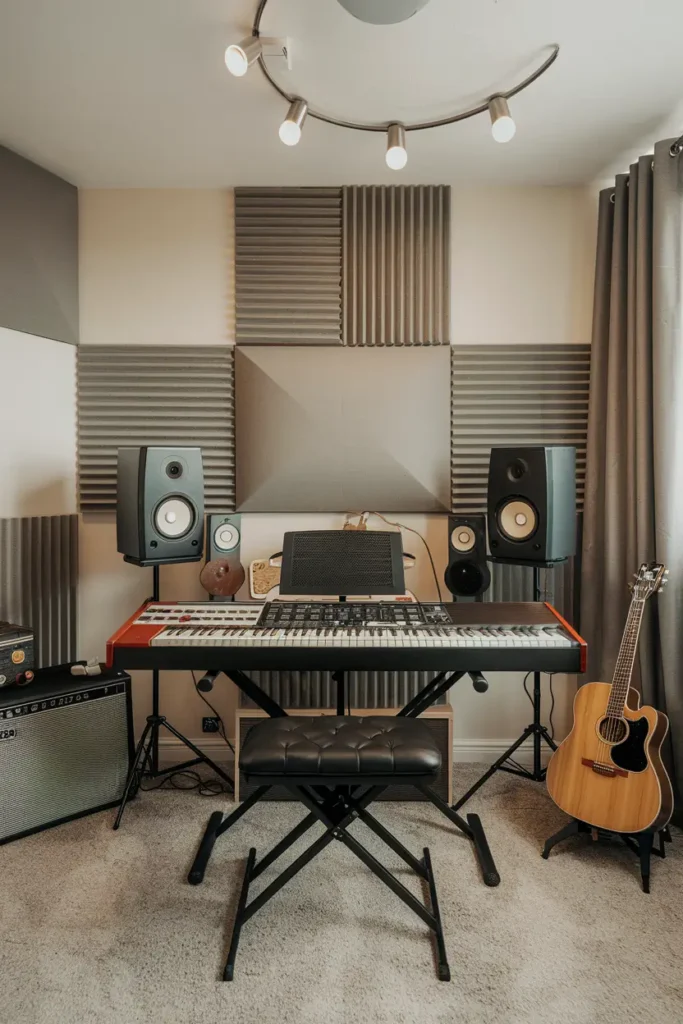
Set up a corner with a keyboard, recording equipment (even toy versions work), and soundproofing panels.
Create a “studio” vibe with dim lighting and professional-looking equipment storage.
Why it works: Music-loving boys feel like they have their own professional space, making their room feel special and mature.
Best for: Boys aged 8-18 who are interested in music, whether playing instruments or digital production.
Pro implementation tip: Include actual acoustic panels or foam—even decorative ones help reduce noise and create better sleep acoustics.
Potential drawback: Can become very messy without proper organization systems in place.
10. Inventor’s Workshop Laboratory
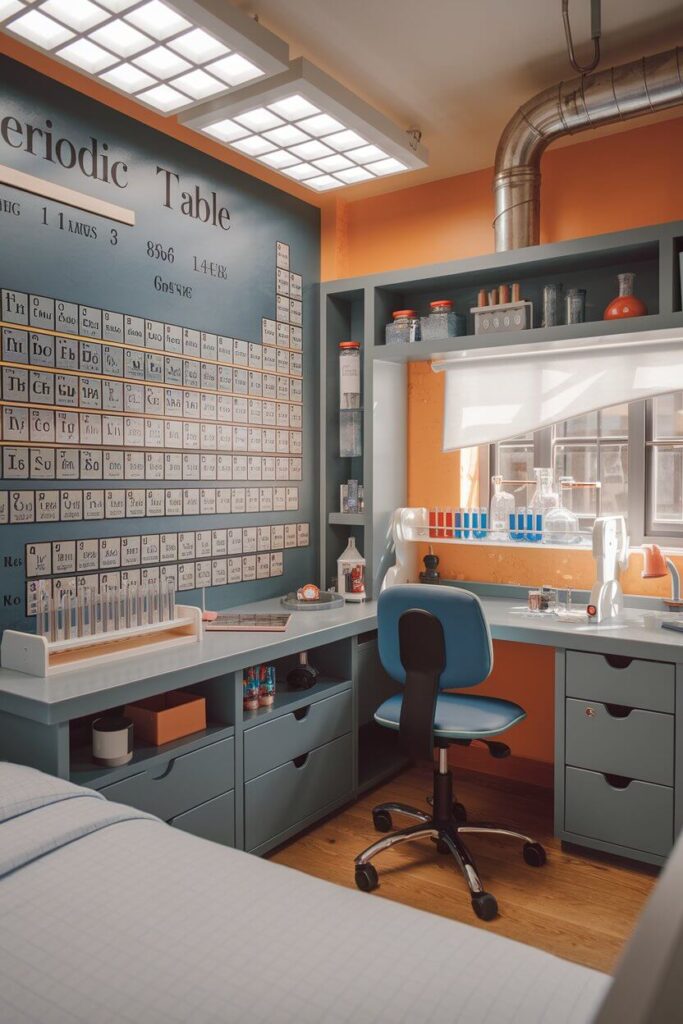
Create a mad scientist’s lab with periodic table wall art, test tube storage for pencils, and a desk area that looks like a laboratory bench. Include fun science-themed decorations and organizational systems.
Why it works: Appeals to curious, experimental boys who love figuring out how things work.
Best for: Science-loving boys aged 6-14 who enjoy experiments and building things.
Safety consideration: Even decorative “lab equipment” should be safe and age-appropriate.
Cozy Comfort Zones
11. Reading Nook Adventure Cave
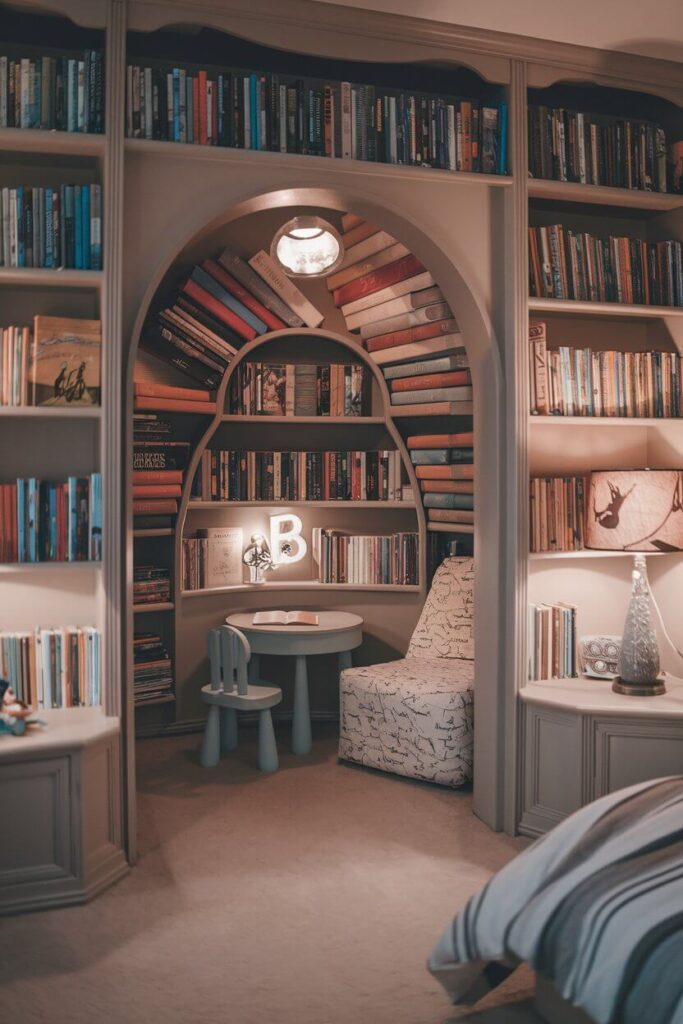
Build a cozy reading cave using bookshelves as walls and soft lighting inside. Make it feel like a secret hideaway where adventures begin through books rather than screens.
Why it works: Creates a special, private space that feels exclusive while promoting reading before bed—a perfect wind-down activity.
Best for: Boys aged 4-12 who enjoy stories and need a quiet space to decompress.
Advanced technique: Install a small speaker in the nook for audiobooks, creating a theater-like experience that makes reading time special.
Multi-perspective analysis: Some boys prefer open spaces, so include options to make the nook more or less enclosed based on personality.
12. Cabin Retreat Atmosphere
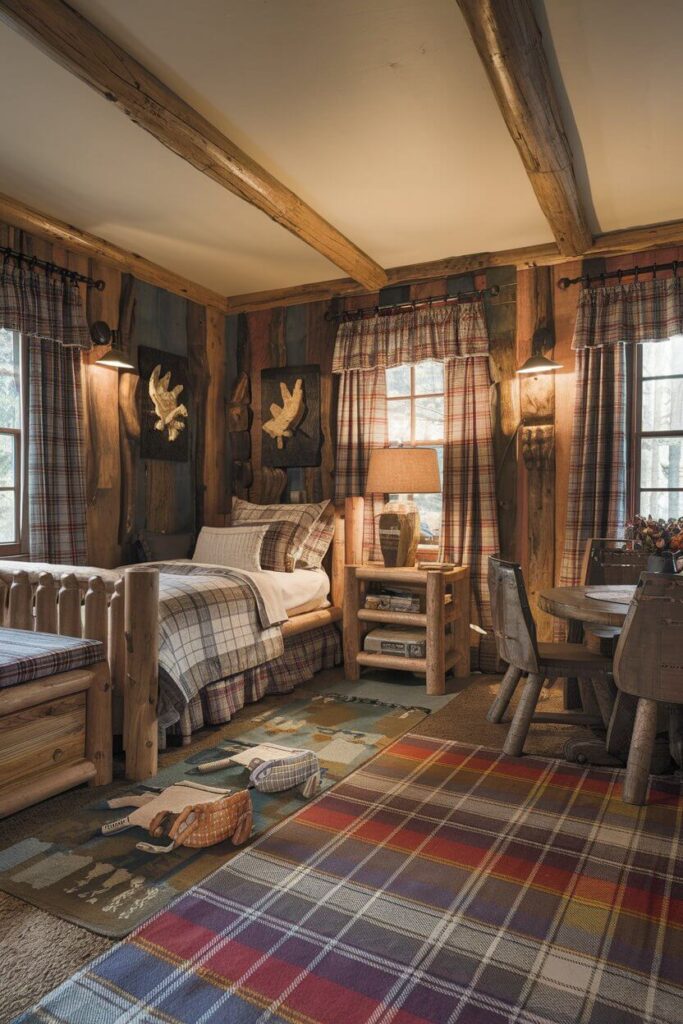
Use wood paneling, plaid patterns, and rustic furniture to create a cozy cabin feeling. Include elements like lantern-style lighting and nature photography to complete the wilderness retreat vibe.
Why it works: The cabin theme naturally promotes relaxation and the feeling of being in a peaceful, natural environment.
Best for: Boys who love camping, nature, or need help winding down from busy days.
Lessons learned: Real wood can be expensive—wood-look vinyl planks or wallpaper can create the same effect for a fraction of the cost.
13. Hammock Paradise
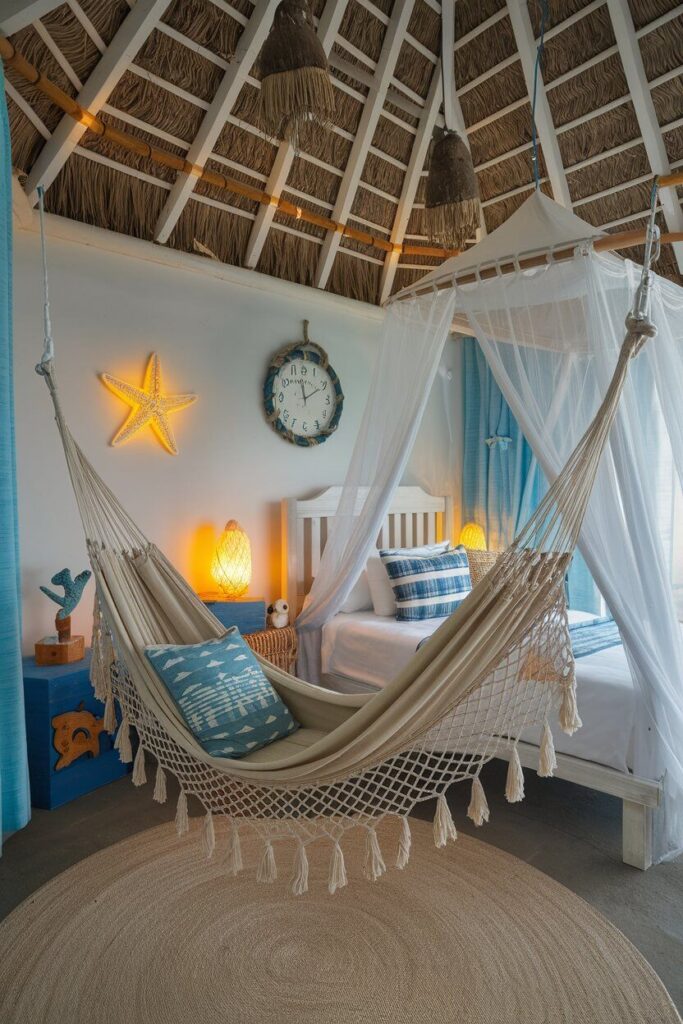
Install a reading hammock in one corner with soft pillows and blankets. Create a tropical or beach vibe with appropriate colors and decorations.
Why it works: Hammocks are naturally soothing and create a unique, fun place to relax that feels different from regular furniture.
Best for: Boys aged 6-16 who need help relaxing or have trouble transitioning from active play to quiet time.
Technical accuracy: Professional installation is crucial for safety—hammocks must be properly mounted to support weight safely.
High-Tech Gaming Havens
14. Retro Arcade Game Room
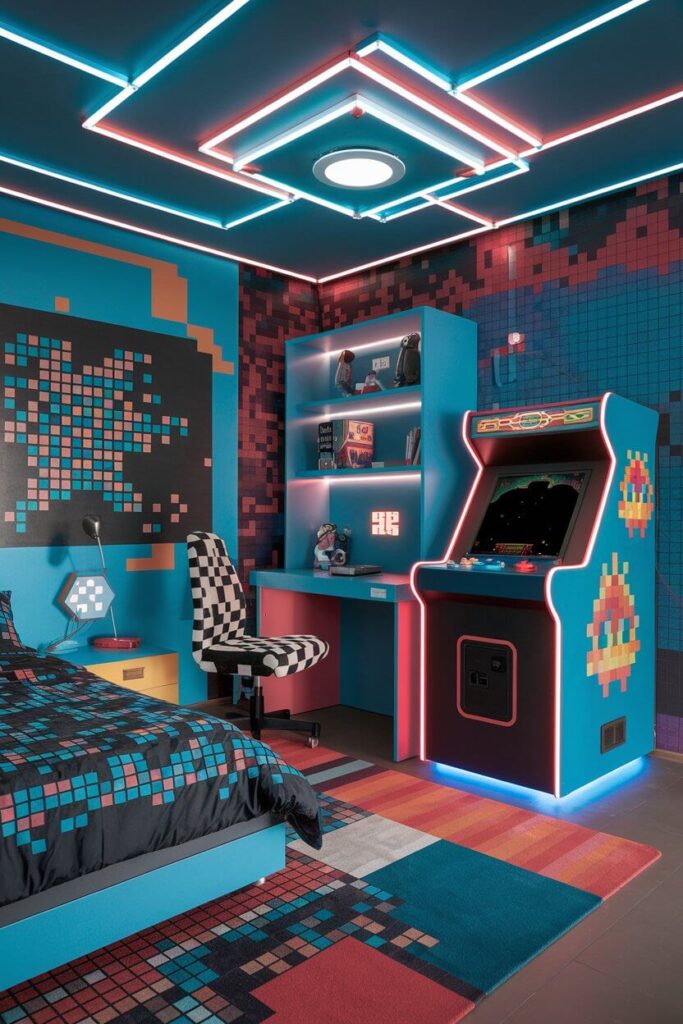
Create a bedroom that celebrates classic gaming with 8-bit art, pixel patterns, and furniture inspired by classic arcade games. Include a small gaming area with retro-style organization.
Why it works: Appeals to boys who love gaming while celebrating the history and art of video games rather than just current trends.
Best for: Gaming enthusiasts aged 8-18 who appreciate both modern and classic games.
Industry context: Retro gaming has seen a huge resurgence, making this theme both current and timeless.
Balance consideration: Set clear boundaries about gaming time versus sleep time to maintain the bedroom’s primary function.
15. Esports Training Facility
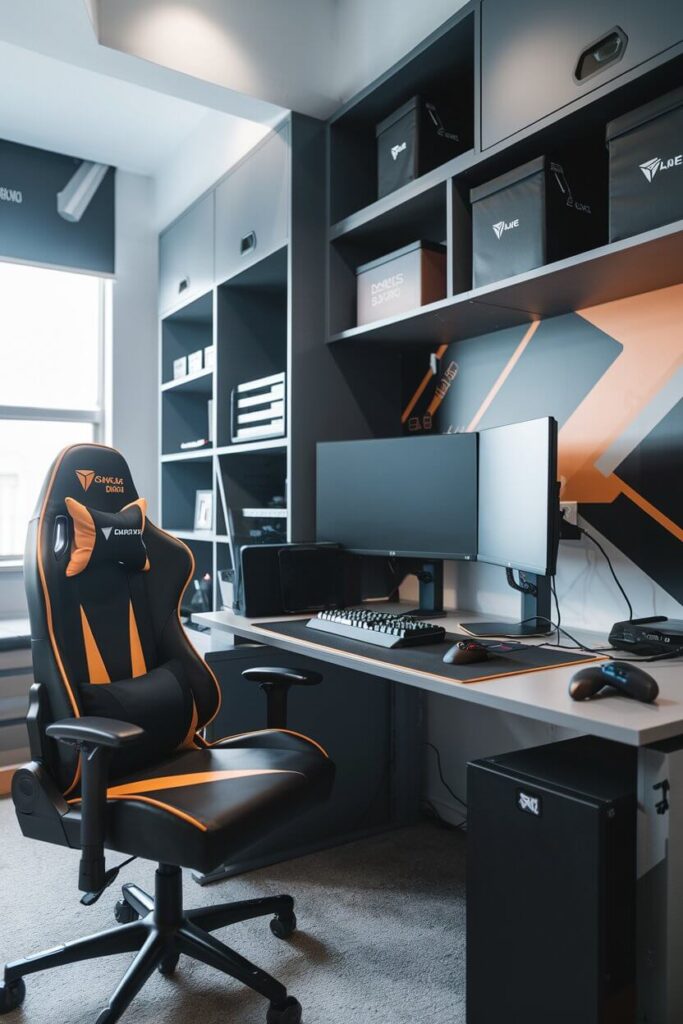
Design a professional-looking gaming setup with ergonomic furniture, proper lighting, and organized equipment storage. Make it feel like a serious training facility for competitive gaming.
Why it works: Treats gaming as a legitimate skill and hobby while creating a space that feels mature and professional.
Best for: Serious gamers aged 10-18 who are passionate about competitive gaming.
Health consideration: Include proper ergonomic seating and lighting to protect physical health during gaming sessions.
Transportation-Themed Rooms
16. Aviation Hangar Headquarters
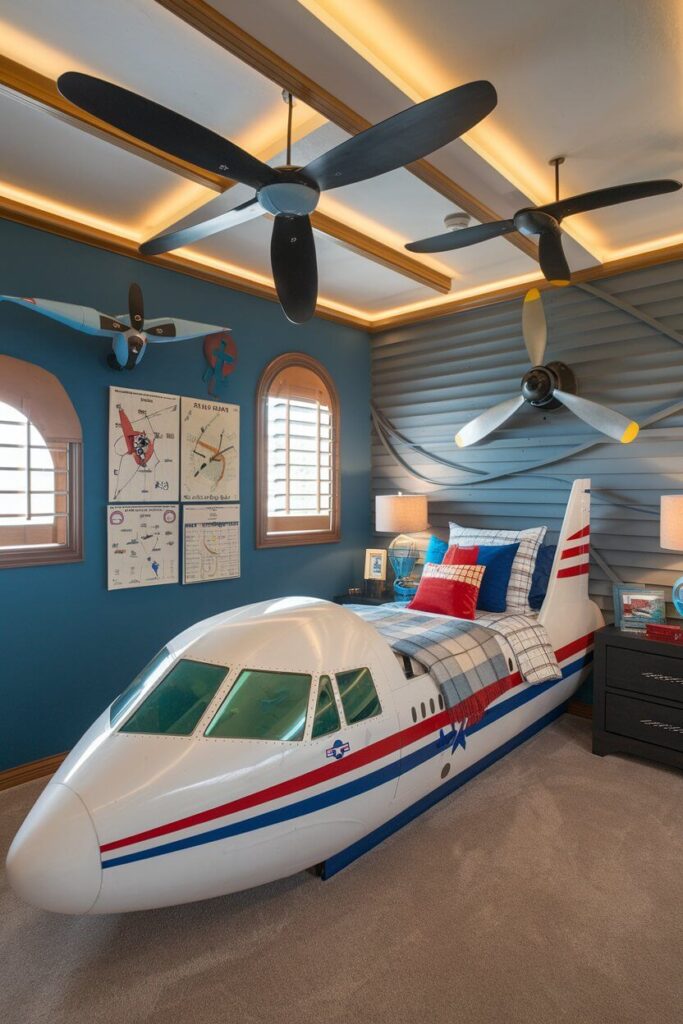
Transform the room into a pilot’s personal hangar with airplane propellers as ceiling fans, aviation charts as wall art, and a bed designed like an aircraft cockpit.
Why it works: Combines adventure with technical interest, appealing to boys who love both flying and mechanical things.
Best for: Boys aged 5-13 who are fascinated by airplanes and flying.
Professional insight: Include educational elements like real aviation charts or models to combine fun with learning.
17. Train Conductor’s Cabin
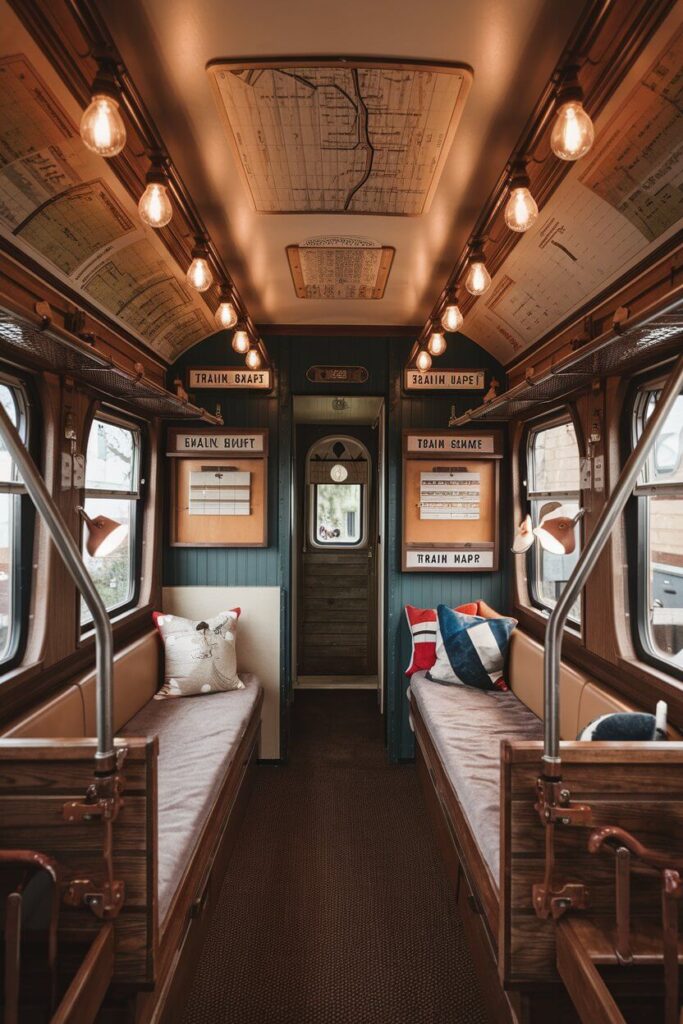
Create a bedroom inspired by vintage train cars with rich wood tones, railway maps, and train schedule boards. Use the room’s length to create a train car layout.
Why it works: Trains represent adventure and travel while the enclosed car feeling creates security and coziness.
Best for: Boys aged 4-11 who love trains and transportation.
Design evolution: Modern train themes can include high-speed rail designs for older boys who prefer contemporary aesthetics.
18. Motorcycle Garage Loft
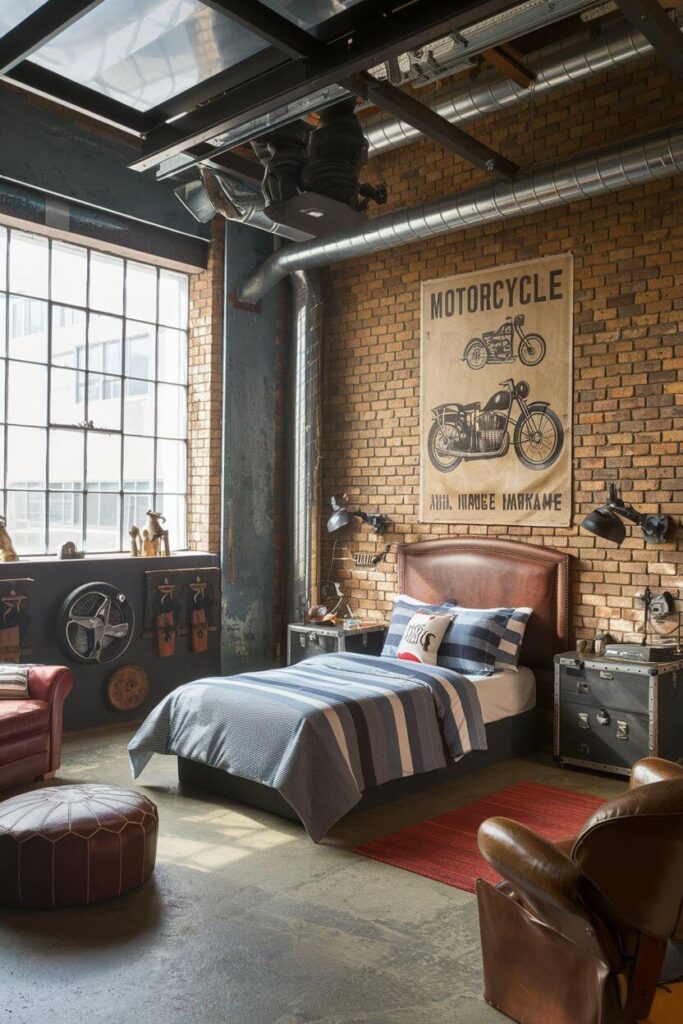
Design a bedroom that feels like a cool motorcycle garage with industrial elements, leather accents, and vintage motorcycle posters.
Why it works: Appeals to older boys who want their space to feel mature and rebellious in a safe way.
Best for: Boys aged 12-18 who are into motorcycles or want a more mature, edgy room design.
Safety note: All decorative elements should be securely mounted and age-appropriate.
Unique Character Themes
19. Superhero Headquarters
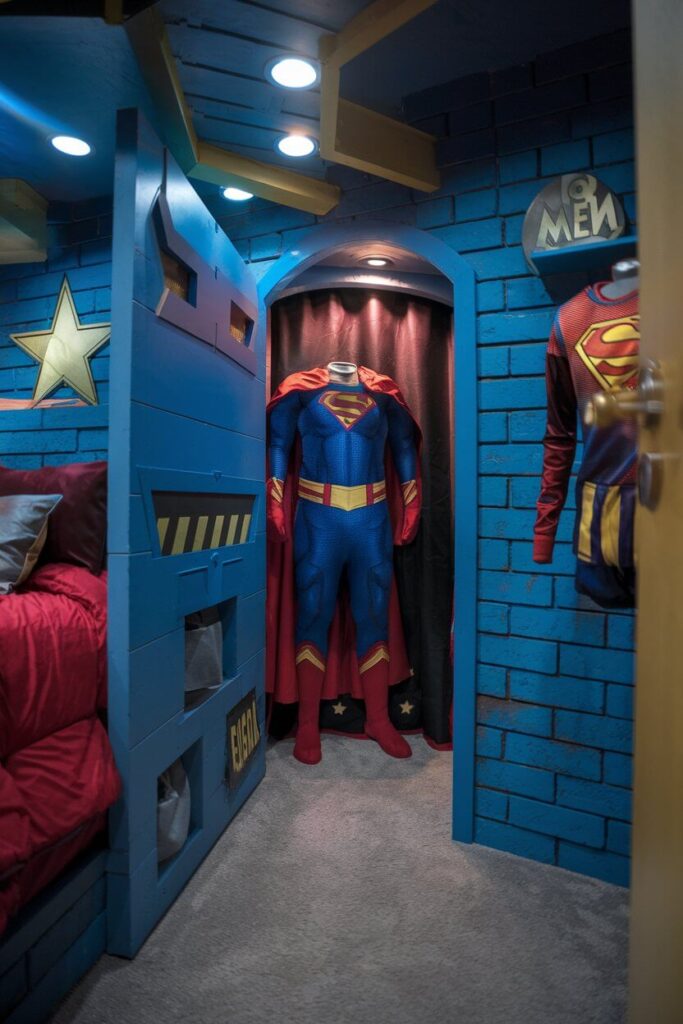
Create a secret superhero base with hidden storage compartments, dramatic lighting, and a costume display area. Focus on original superhero concepts rather than specific branded characters.
Why it works: Every boy imagines being a superhero, and having their own “headquarters” makes them feel powerful and special.
Best for: Boys aged 3-10 who love superhero stories and imaginative play.
Creative approach: Let your son create his own superhero identity and design the room around his unique character.
20. Detective’s Investigation Office
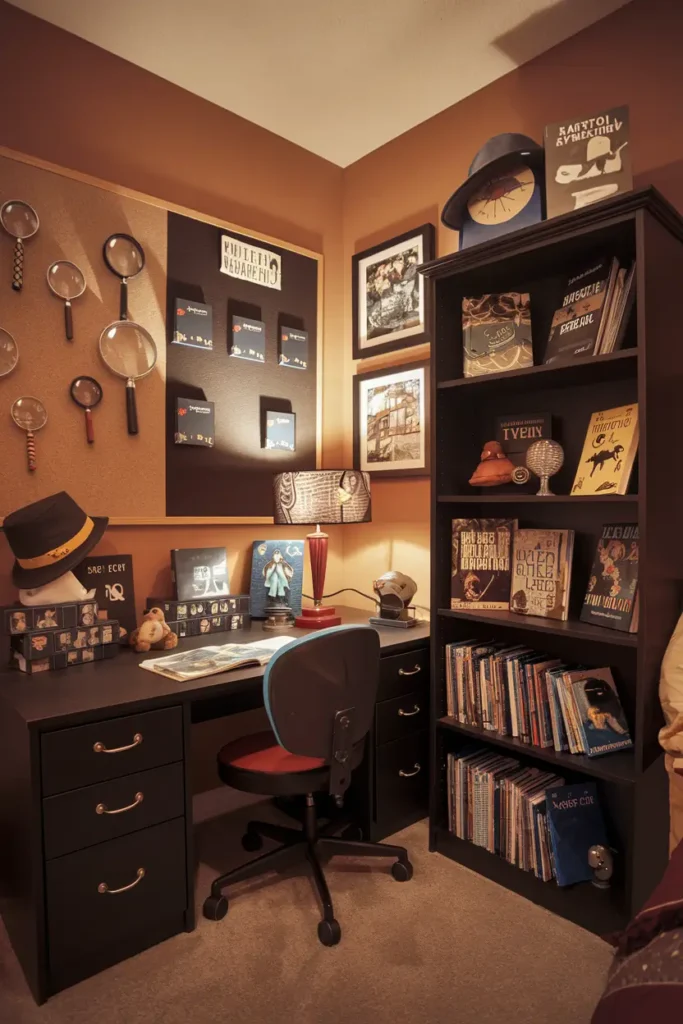
Set up a bedroom that looks like a detective’s office with a bulletin board for “cases,” magnifying glass collections, and mystery books prominently displayed.
Why it works: Appeals to boys who love solving puzzles and mysteries while encouraging problem-solving skills.
Best for: Boys aged 7-14 who enjoy mystery stories, puzzles, or detective shows.
Interactive element: Create ongoing “cases” that can be solved through reading or educational activities.
Budget-Friendly Brilliant Ideas
21. Cardboard Box Adventure Castle
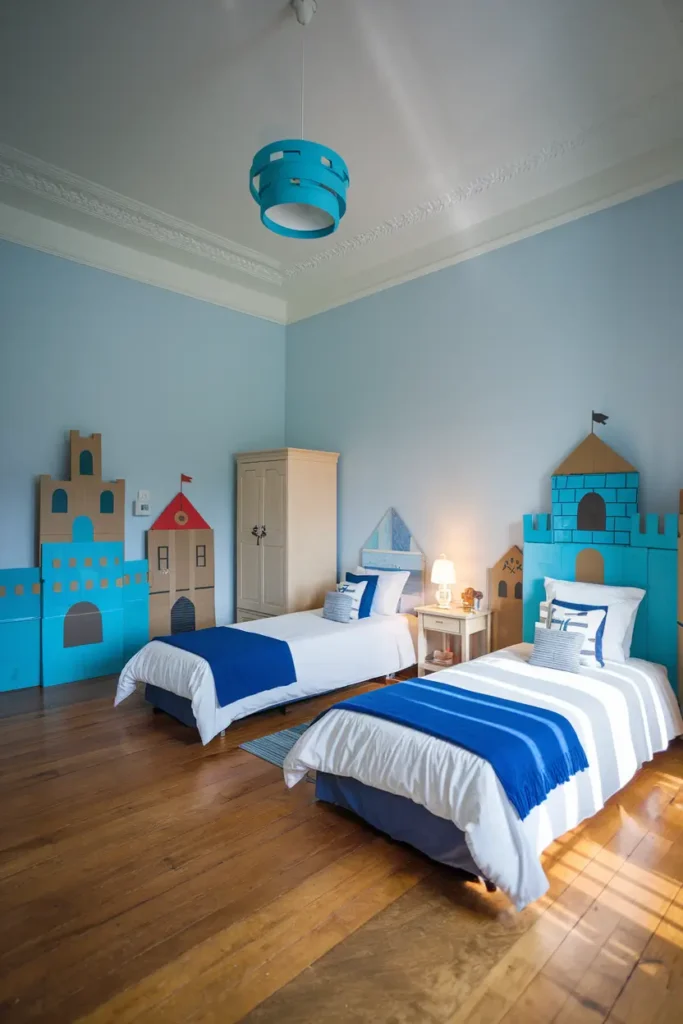
Use large cardboard boxes to create temporary but exciting structures that can be customized and changed regularly. Paint, decorate, and connect boxes to create forts, spaceships, or castles.
Why it works: Extremely affordable while allowing for constant creativity and change, keeping the room feeling fresh and exciting.
Best for: Boys aged 3-10 who love building and creating.
Sustainability bonus: Completely recyclable and replaceable, making it environmentally friendly.
Parent tip: Set up a rotation system where new box structures replace old ones monthly, maintaining excitement without clutter.
22. DIY Growth Chart Adventure Map
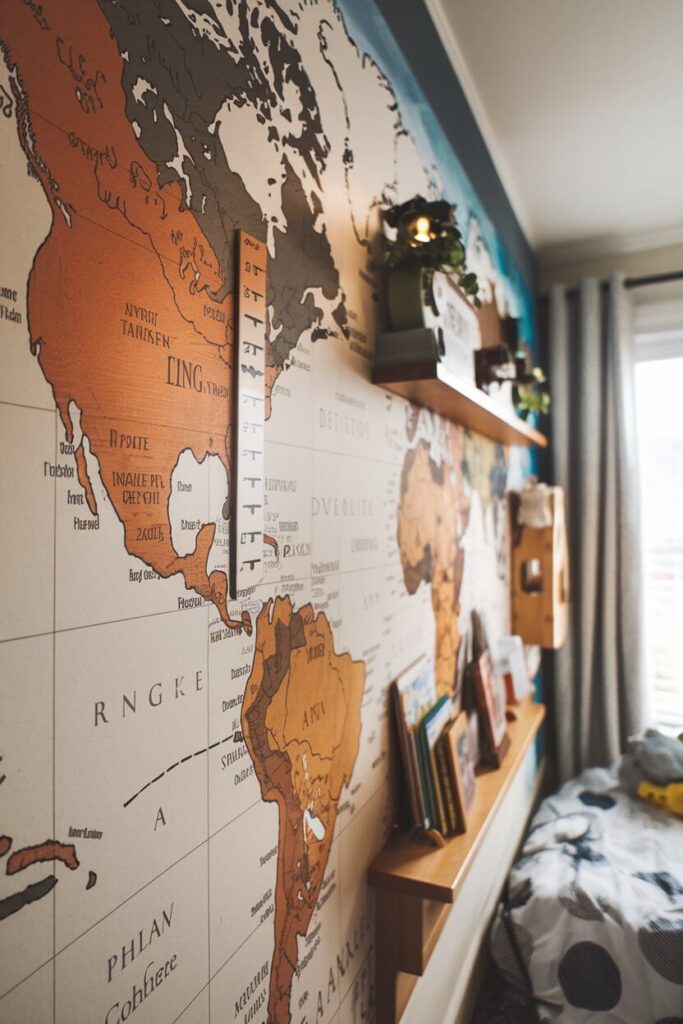
Create a large wall map showing different adventure destinations at various height markers, turning growth measurement into an exciting journey.
Why it works: Combines the practical need to track growth with the excitement of planning imaginary adventures.
Best for: Boys aged 2-12 who are still growing rapidly.
Educational bonus: Include real geography and facts about different locations to combine fun with learning.
Personalization opportunity: Add stickers or markers showing “adventures completed” at different heights.
Creating the Perfect Sleep Environment
The most brilliant bedroom design means nothing if it doesn’t actually promote good sleep.
After implementing hundreds of these ideas, I’ve learned that the key to success lies in balancing excitement with tranquility.
The Golden Rule: Every exciting element should have a “sleep mode.” LED lights need dimmers, busy patterns should be balanced with calm spaces, and stimulating activities should have clear boundaries away from the bed itself.
Temperature and comfort considerations: Regardless of theme, maintain a cool room temperature (65-68°F), ensure blackout capabilities for proper melatonin production, and invest in quality bedding that matches the theme without compromising comfort.
Storage solutions that maintain the magic: Every theme needs practical storage that doesn’t break the illusion. Pirate chests, space station lockers, or medieval armor stands can all serve as functional storage while enhancing the room’s atmosphere.
Implementation Strategy for Long-Term Success
Start with one focal point: Don’t try to transform everything at once. Pick one major element (like the bed or one wall) and build the theme gradually.
This approach is easier on budgets and allows you to gauge your child’s sustained interest.
Plan for evolution: Boys’ interests change rapidly. Design elements that can be easily modified or updated. Paint colors can be changed, posters can be swapped, and accessories can evolve with growing interests.
Involve your son in the process: The most successful bedroom transformations happen when boys feel ownership of the design process.
Let them make choices within your established parameters, and they’ll be more invested in maintaining and enjoying their space.
Set clear expectations: Establish that the awesome bedroom comes with the responsibility of keeping it reasonably clean and respecting bedtime rules. The space is a privilege that comes with growing maturity.
The Bottom Line: Why This Actually Works
These bedroom transformations succeed because they address the real reasons kids resist bedtime. It’s rarely about being tired—it’s about FOMO (fear of missing out), lack of control, or anxiety about the transition from day to night.
When a bedroom becomes their personal kingdom, bedtime stops feeling like punishment and starts feeling like a reward.
They’re not being sent away from the fun—they’re going to the most exciting place in the house, their own private adventure zone.
The magic happens when parents realize that investing in their child’s sleep environment pays dividends in family harmony, better rest for everyone, and a child who actually looks forward to bedtime.
After all, isn’t a peaceful evening routine worth more than any amount of money or effort?
Your next step: Choose one idea that resonates with your son’s current interests and start planning your transformation.
Remember, the goal isn’t Pinterest perfection—it’s creating a space so special that your little one can’t wait to spend time there, even if that time involves closing his eyes and drifting off to dream about tomorrow’s adventures.

